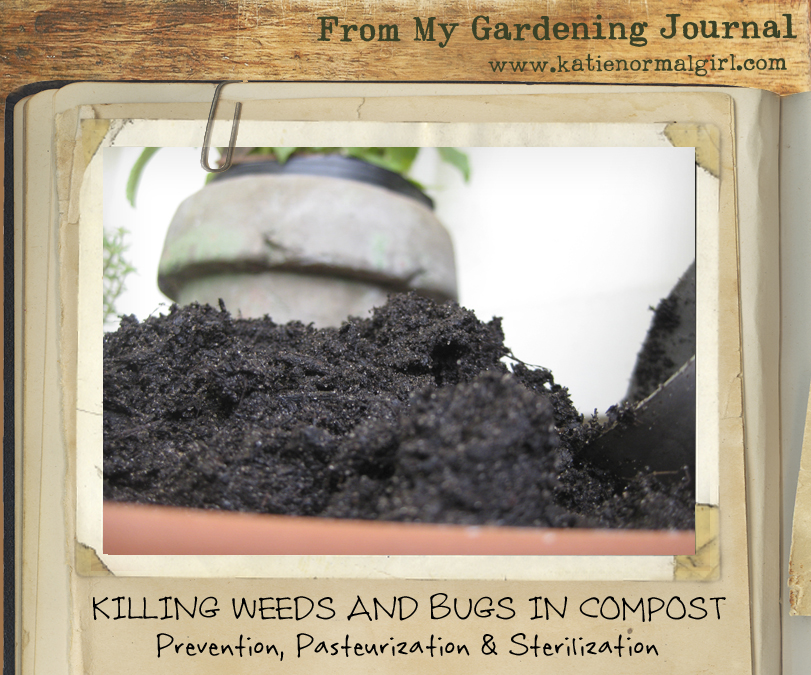Ideally your compost pile will heat up enough during the decomposition process to kill most of the unwanted bugs and weed seeds that get into it. Sometimes this isn’t the case and you need a little extra help. You have a couple of options, some are more harsh than others and you want to balance your desire to kill the weed seeds and bad bugs with your desire to maintain the life of the beneficial organisms that are part of your compost.
Prevention
First and foremost of course, is trying to avoid weeds seeds and bugs making it through the decomposition process in the first place. One of the ways that you can ensure weed seeds are killed, is to put them in the hottest part of the compost pile, the center. If you’ve plucked some weeds from your garden that have gone to seed, make sure you bury them in the center of the pile and not along the outer edges where it doesn’t heat up as much.
Pasteurizing in the Oven or on the Stove
Sometimes weed seeds and bad bugs make it past the decomposition process, that’s when you can turn to pasteurization. This process is similar to sterilization and solar sanitization, but it is done at a lower temperature. The idea being that you heat the compost enough to kill the weed seeds and bad bugs, but not so much that you kill the beneficial organisms that you have worked so hard to cultivate. Work in small batches using fully decomposed compost and be forewarned, this process may make your house smell. Best to do it on a day when you can open the windows and let a breeze in!
In the Oven
Preheat your oven to 180°F. Fill a large aluminum baking tray with three to four inches of compost and place it in the oven. Use a cooking thermometer to monitor the temperature of the compost in the center of the tray. Once it reaches between 160°F-165°F, allow the compost to bake for 30 minutes. Remove the compost and allow it to cool completely before using it.
On the Stove
This process is similar to the “In the Oven” method. It’s great for compost that you’ll be using for mushroom growing. Again, working in small batches, fill a large pot half way with compost and cover it with hot water. Place the pot on the stove over medium heat and allow it to heat the compost and water mixture to a temperature between 160°F-165°F, use a cooking thermometer to verify. Stir the mixture occasionally during the heating process. Once the mixture reaches the desired temperature, allow it to cook for 10 minutes then remove it from the heat and cover with a lid. Allow the compost to cool. You don’t need to drain the excess water off, it should be absorbed by the potting soil you mix in with your compost.
Sterilization in the Oven or on the Stove
Sterilization uses more heat and kills weed seeds, bugs and a lot of the beneficial bacteria in compost. This method is also great for sterilizing potting soil.
Follow the same procedures for pasteurizing the compost or soil, but you’ll want to heat the compost to 180°F. Some of your beneficial bacteria may be able to survive these temperatures but the weed seeds will not.
Boiling Water
I have also heard of some gardeners pouring boiling water over their compost to sanitize it. I prefer not to use this method because water boils at 220°F and it will annihilate any organism in your compost, even the good ones. In extreme cases you can use this method, but I’d try the pasteurization or sterilization first.
Thank you to one my great readers, Petunia, for asking a simple question and inspiring this great post!
![]()


thanks for liking and following me! I’m so excited to read your blog.. I see so many great uses for my herbs here!
Of course, your blog is so intriguing! I’m trying to get better about posting the items from my herbalism column, The 21st Century Herbalist, on here so check back for more herby fun.
That’s some good looking compost there, Katie girl!
Haha, thanks! And thanks for sharing my link on your post about composting your weeds.